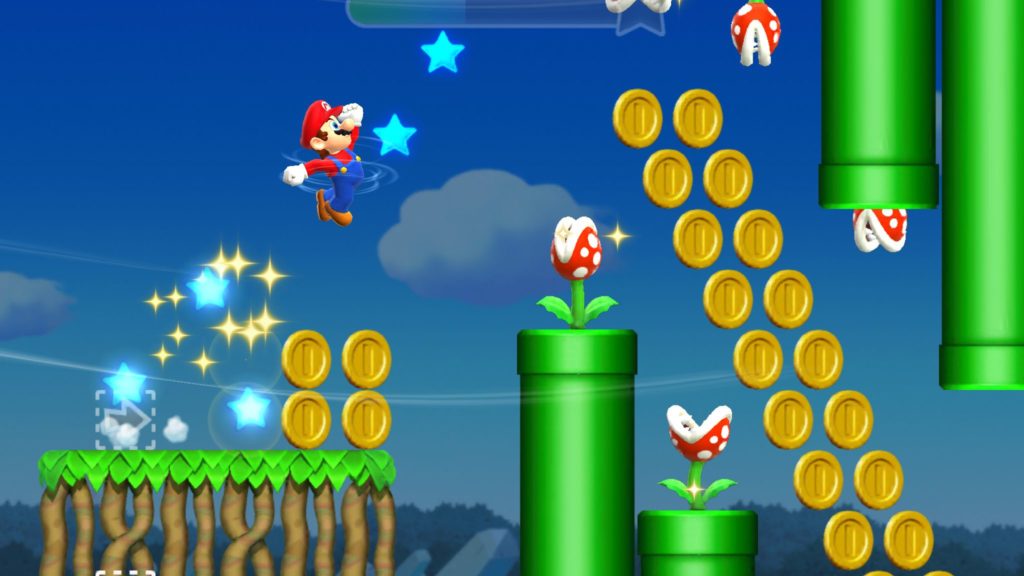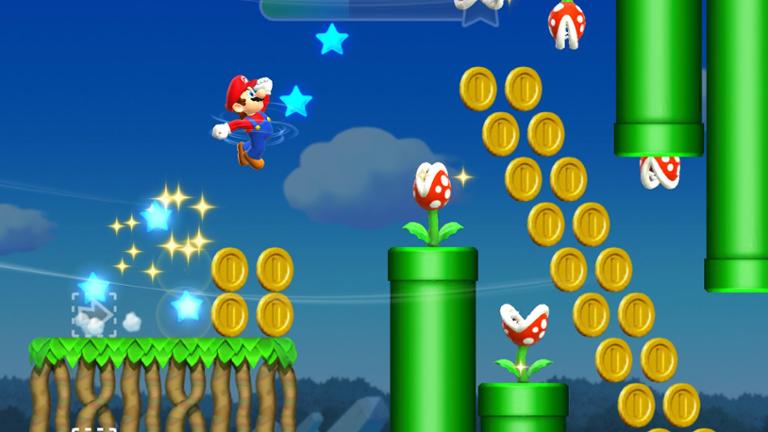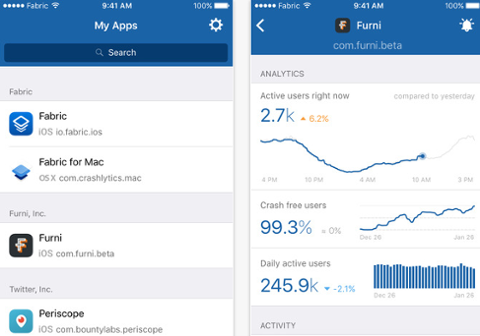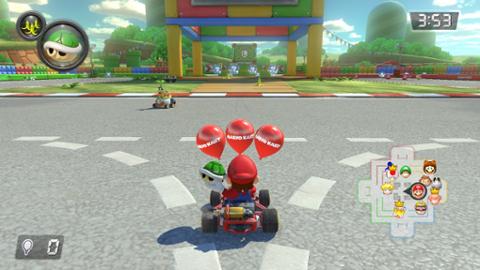 Earlier this week, Nintendo executives confessed something surprising: “Super Mario Run,” the company’s inaugural game for smartphones, had failed to achieve an “acceptable profit point” despite roughly 200 million downloads. That game, which adapted the popular “Super Mario” franchise for touch-screen controls, is free to download but $9.99 if the user wants to unlock all the available content. According to Business Insider, some 5 percent of players were paying that full amount by the beginning of the year, a few weeks after the game’s release. If that paying-customer number remained constant throughout the balance of 2017, Nintendo has earned around $100 million off the game—before you factor in taxes and overhead, plus Apple’s customary App Store fee. If Nintendo were an ordinary software developer, that kind of revenue would prove a resounding success. For an iconic game company that earns billions of dollars per year, however, $100 million seems to count as middling, especially when it’s earned on the back of one of the most iconic video-game characters of all time. For its next smartphone-based game, Nintendo intends on embracing the “micropayments” model adopted by other apps. Users will be able to download “Animal Crossing: Product Camp” for free, and pay actual cash for “tickets” that speed up processes within the game. Nintendo isn’t alone in its app troubles. Developers of all sizes regularly complain about app discoverability (or lack thereof). Although Apple recently redesigned the App Store, those changes weren’t enough to silence the complaints from developers who build things for iOS. “Apple’s big move was to separate games and apps but this removed the Top Charts (where you could organically discover & scroll through thousands of apps) as we knew it and hides the new ranks a couple of thumb scrolls down into a separate tab,” Jonathan Kay, COO of Apptopia, wrote in a much-circulated blog posting in late October. “If Apple really wanted to see high quality, smaller developers be successful, why would they create so many barriers to entry?” Those widespread issues with discovery, combined with huge swaths of the smartphone-using population unwilling to pay for apps, create a challenging situation (to put it mildly) for app developers all over the world. Is it better to stick with the “traditional” revenue model, and create something that people must pay for up-front? Or do you release something for free, hoping your users will pay a buck or two (or more) to unlock special features? (Nintendo was able to get away with charging $9.99 for "Mario," but most developers simply can't charge that amount of money for a relatively unknown product.) Issuing an app for free might spike downloads during those crucial weeks immediately following an app’s release. But giving your product away for nothing isn’t guaranteed to drive a revenue stream—and having a high ranking in an app store isn’t enough by itself to keep the office lights on. For developers who choose that route, the big questions will revolve around pay-gates—where to put them, how much to charge, and how often. In the meantime, Nintendo probably hopes its next “Mario” app fares far better (and “better,” in this instance, is a relative term).
Earlier this week, Nintendo executives confessed something surprising: “Super Mario Run,” the company’s inaugural game for smartphones, had failed to achieve an “acceptable profit point” despite roughly 200 million downloads. That game, which adapted the popular “Super Mario” franchise for touch-screen controls, is free to download but $9.99 if the user wants to unlock all the available content. According to Business Insider, some 5 percent of players were paying that full amount by the beginning of the year, a few weeks after the game’s release. If that paying-customer number remained constant throughout the balance of 2017, Nintendo has earned around $100 million off the game—before you factor in taxes and overhead, plus Apple’s customary App Store fee. If Nintendo were an ordinary software developer, that kind of revenue would prove a resounding success. For an iconic game company that earns billions of dollars per year, however, $100 million seems to count as middling, especially when it’s earned on the back of one of the most iconic video-game characters of all time. For its next smartphone-based game, Nintendo intends on embracing the “micropayments” model adopted by other apps. Users will be able to download “Animal Crossing: Product Camp” for free, and pay actual cash for “tickets” that speed up processes within the game. Nintendo isn’t alone in its app troubles. Developers of all sizes regularly complain about app discoverability (or lack thereof). Although Apple recently redesigned the App Store, those changes weren’t enough to silence the complaints from developers who build things for iOS. “Apple’s big move was to separate games and apps but this removed the Top Charts (where you could organically discover & scroll through thousands of apps) as we knew it and hides the new ranks a couple of thumb scrolls down into a separate tab,” Jonathan Kay, COO of Apptopia, wrote in a much-circulated blog posting in late October. “If Apple really wanted to see high quality, smaller developers be successful, why would they create so many barriers to entry?” Those widespread issues with discovery, combined with huge swaths of the smartphone-using population unwilling to pay for apps, create a challenging situation (to put it mildly) for app developers all over the world. Is it better to stick with the “traditional” revenue model, and create something that people must pay for up-front? Or do you release something for free, hoping your users will pay a buck or two (or more) to unlock special features? (Nintendo was able to get away with charging $9.99 for "Mario," but most developers simply can't charge that amount of money for a relatively unknown product.) Issuing an app for free might spike downloads during those crucial weeks immediately following an app’s release. But giving your product away for nothing isn’t guaranteed to drive a revenue stream—and having a high ranking in an app store isn’t enough by itself to keep the office lights on. For developers who choose that route, the big questions will revolve around pay-gates—where to put them, how much to charge, and how often. In the meantime, Nintendo probably hopes its next “Mario” app fares far better (and “better,” in this instance, is a relative term). Nintendo Illuminates Key Mobile Developer Challenge
 Earlier this week, Nintendo executives confessed something surprising: “Super Mario Run,” the company’s inaugural game for smartphones, had failed to achieve an “acceptable profit point” despite roughly 200 million downloads. That game, which adapted the popular “Super Mario” franchise for touch-screen controls, is free to download but $9.99 if the user wants to unlock all the available content. According to Business Insider, some 5 percent of players were paying that full amount by the beginning of the year, a few weeks after the game’s release. If that paying-customer number remained constant throughout the balance of 2017, Nintendo has earned around $100 million off the game—before you factor in taxes and overhead, plus Apple’s customary App Store fee. If Nintendo were an ordinary software developer, that kind of revenue would prove a resounding success. For an iconic game company that earns billions of dollars per year, however, $100 million seems to count as middling, especially when it’s earned on the back of one of the most iconic video-game characters of all time. For its next smartphone-based game, Nintendo intends on embracing the “micropayments” model adopted by other apps. Users will be able to download “Animal Crossing: Product Camp” for free, and pay actual cash for “tickets” that speed up processes within the game. Nintendo isn’t alone in its app troubles. Developers of all sizes regularly complain about app discoverability (or lack thereof). Although Apple recently redesigned the App Store, those changes weren’t enough to silence the complaints from developers who build things for iOS. “Apple’s big move was to separate games and apps but this removed the Top Charts (where you could organically discover & scroll through thousands of apps) as we knew it and hides the new ranks a couple of thumb scrolls down into a separate tab,” Jonathan Kay, COO of Apptopia, wrote in a much-circulated blog posting in late October. “If Apple really wanted to see high quality, smaller developers be successful, why would they create so many barriers to entry?” Those widespread issues with discovery, combined with huge swaths of the smartphone-using population unwilling to pay for apps, create a challenging situation (to put it mildly) for app developers all over the world. Is it better to stick with the “traditional” revenue model, and create something that people must pay for up-front? Or do you release something for free, hoping your users will pay a buck or two (or more) to unlock special features? (Nintendo was able to get away with charging $9.99 for "Mario," but most developers simply can't charge that amount of money for a relatively unknown product.) Issuing an app for free might spike downloads during those crucial weeks immediately following an app’s release. But giving your product away for nothing isn’t guaranteed to drive a revenue stream—and having a high ranking in an app store isn’t enough by itself to keep the office lights on. For developers who choose that route, the big questions will revolve around pay-gates—where to put them, how much to charge, and how often. In the meantime, Nintendo probably hopes its next “Mario” app fares far better (and “better,” in this instance, is a relative term).
Earlier this week, Nintendo executives confessed something surprising: “Super Mario Run,” the company’s inaugural game for smartphones, had failed to achieve an “acceptable profit point” despite roughly 200 million downloads. That game, which adapted the popular “Super Mario” franchise for touch-screen controls, is free to download but $9.99 if the user wants to unlock all the available content. According to Business Insider, some 5 percent of players were paying that full amount by the beginning of the year, a few weeks after the game’s release. If that paying-customer number remained constant throughout the balance of 2017, Nintendo has earned around $100 million off the game—before you factor in taxes and overhead, plus Apple’s customary App Store fee. If Nintendo were an ordinary software developer, that kind of revenue would prove a resounding success. For an iconic game company that earns billions of dollars per year, however, $100 million seems to count as middling, especially when it’s earned on the back of one of the most iconic video-game characters of all time. For its next smartphone-based game, Nintendo intends on embracing the “micropayments” model adopted by other apps. Users will be able to download “Animal Crossing: Product Camp” for free, and pay actual cash for “tickets” that speed up processes within the game. Nintendo isn’t alone in its app troubles. Developers of all sizes regularly complain about app discoverability (or lack thereof). Although Apple recently redesigned the App Store, those changes weren’t enough to silence the complaints from developers who build things for iOS. “Apple’s big move was to separate games and apps but this removed the Top Charts (where you could organically discover & scroll through thousands of apps) as we knew it and hides the new ranks a couple of thumb scrolls down into a separate tab,” Jonathan Kay, COO of Apptopia, wrote in a much-circulated blog posting in late October. “If Apple really wanted to see high quality, smaller developers be successful, why would they create so many barriers to entry?” Those widespread issues with discovery, combined with huge swaths of the smartphone-using population unwilling to pay for apps, create a challenging situation (to put it mildly) for app developers all over the world. Is it better to stick with the “traditional” revenue model, and create something that people must pay for up-front? Or do you release something for free, hoping your users will pay a buck or two (or more) to unlock special features? (Nintendo was able to get away with charging $9.99 for "Mario," but most developers simply can't charge that amount of money for a relatively unknown product.) Issuing an app for free might spike downloads during those crucial weeks immediately following an app’s release. But giving your product away for nothing isn’t guaranteed to drive a revenue stream—and having a high ranking in an app store isn’t enough by itself to keep the office lights on. For developers who choose that route, the big questions will revolve around pay-gates—where to put them, how much to charge, and how often. In the meantime, Nintendo probably hopes its next “Mario” app fares far better (and “better,” in this instance, is a relative term). 


